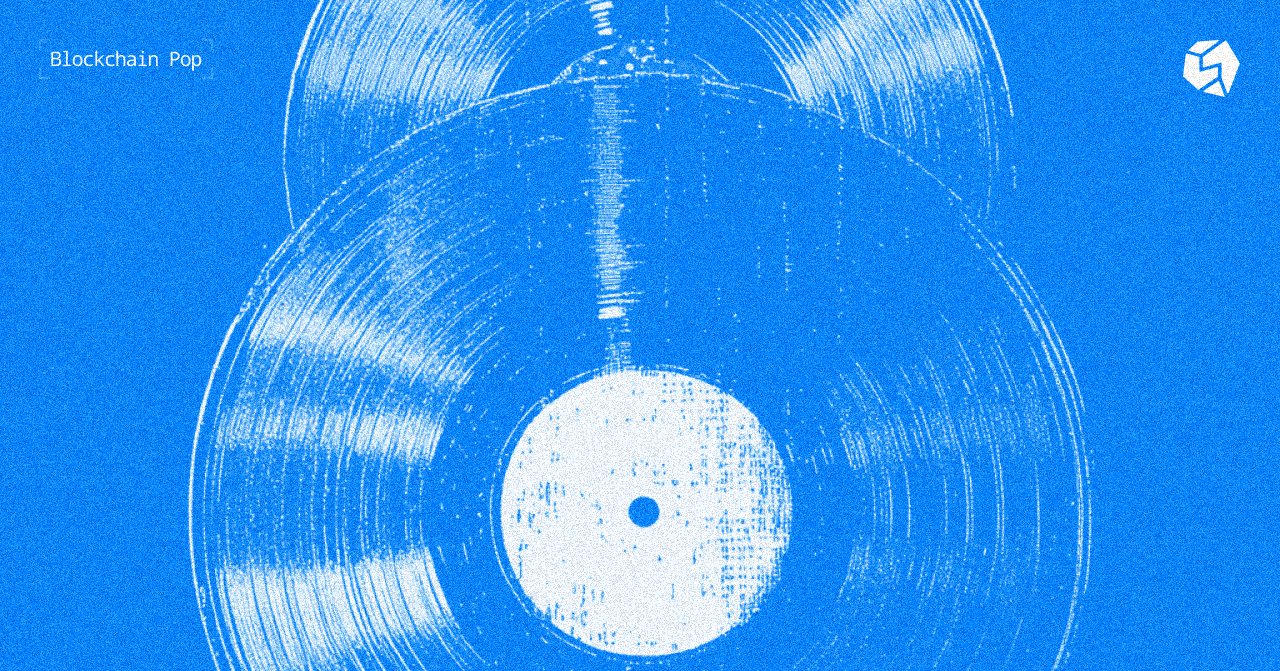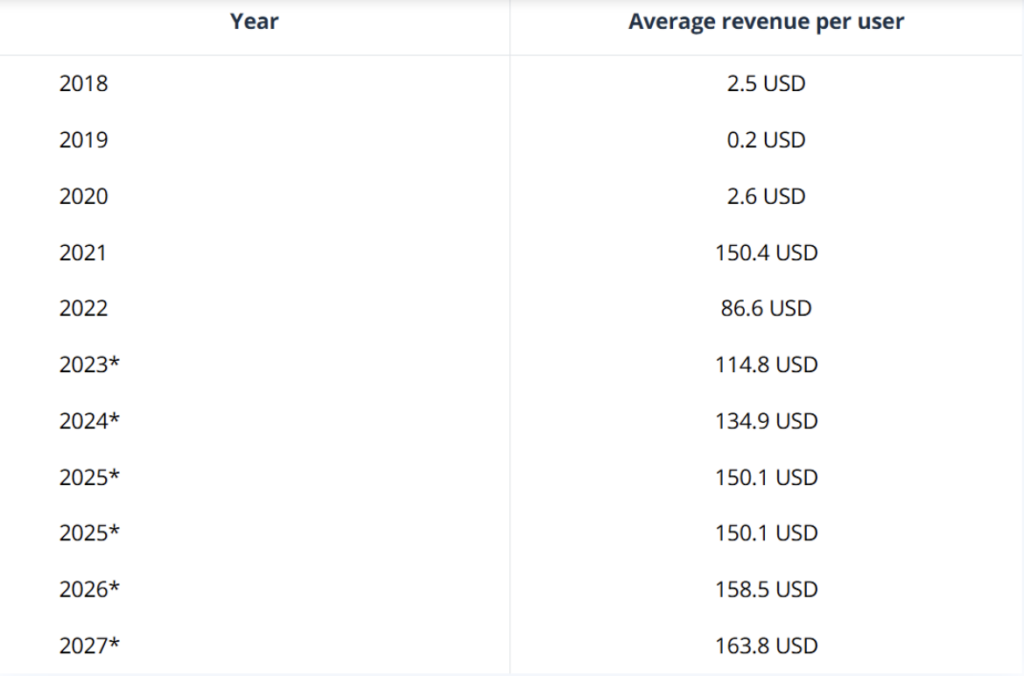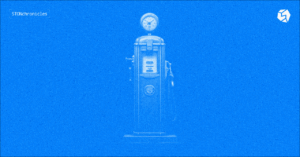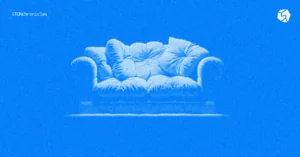
From chart-topping artists to indie musicians, NFTs are opening new avenues for creativity, fan engagement, and revenue streams. But what does this mean for artists, listeners, and investors in the ever-evolving landscape of music and technology?
What Are Music NFTs?
Simply put, it’s a unique digital token that’s linked to a piece of music. This could be a single track, an entire album, a music video, or even a piece of generative music.
But here’s where it gets interesting: music NFTs aren’t just about owning a digital file. They’re about owning a piece of the music itself. Imagine having a stake in your favorite artist’s next hit – that’s the kind of game-changer we’re talking about.
Music NFTs come in various forms, catering to different aspects of the industry:
- Audio NFTs: Full songs, albums, or unique sound clips.
- Visual NFTs: Album artwork, music video clips, or digital concert posters.
- Experience NFTs: VIP access, meet-and-greets, or exclusive online events.
- Royalty NFTs: Tokens representing a share in a song’s royalties.
- Collectible NFTs: Limited edition digital or physical merchandise.
Unlike traditional digital files, NFTs offer:
- Proof of ownership and authenticity
- Scarcity and uniqueness
- Potential for royalties on secondary sales
- Smart contract functionality for automated rights management
Types of Music NFTs: Exclusivity is the Name of the Game
When it comes to music NFTs, there’s something for everyone:
- 1/1 NFTs: These are unique, one-of-a-kind pieces. Think of them as the Mona Lisa of the digital music world.
- Open Editions: The people’s choice. Anyone can mint these, but often only for a limited time. It’s like a limited-time merch drop.
- Limited Editions: The goldilocks of NFTs. Not too rare, not too common. Perfect for building a community of dedicated fans.
Some Stats: The Rise of NFTs in Music
The NFT boom of 2020-2021 catapulted these digital assets into the spotlight, with the music industry quickly recognizing their potential. Key statistics highlight this trend:
- Market Growth: The value of music NFTs is projected to increase by 30% over the next 5 years. North America and Europe currently dominate the NFT music market, with East Asia Pacific close behind.
NFT music market share by region. Source: Cognitive Market Research
- Impressive CAGR: The Compound Annual Growth Rate (CAGR) for music NFTs is expected to reach 29.6% from 2023 to 2028.
Expected CAGR increment in NFT music. Source: Global Market Estimates
- Revenue Potential: By 2027, the average revenue per user in the NFT music market is estimated to reach $163.8 USD.

Expected average revenue increment in NFTs. Source: Statista
Successful Music NFT Examples
Several high-profile artists have already made significant strides in the music NFT space:
- 3LAU: DJ 3LAU sold 33 NFTs for $11.7 million, including unique song versions and custom-made music.
- Kings of Leon: The band released their album “When You See Yourself” as an NFT, offering special perks like front-row concert tickets.
- Grimes: The artist sold $6 million worth of digital artworks, including some featuring her music.
- Eminem: His “Shady Con” NFT collection, including original instrumental beats, raised over $1.78 million.
- Whitney Houston: A collection of unreleased demo recordings sold as NFTs for over $1 million.
Why Artists Are Jumping on the NFT Bandwagon
Let’s face it – the current streaming model isn’t exactly a goldmine for most artists. With platforms like Spotify paying a measly $0.003 to $0.005 per stream, you’d need millions of plays just to buy a cup of coffee.
Enter music NFTs. They’re flipping the script, allowing artists to:
- Sell their music directly to fans without middlemen taking a cut
- Earn royalties from secondary sales (hello, passive income!)
- Build stronger connections with their fan base
- Experiment with new forms of creativity and distribution
Just ask Daniel Allan, who went from his parents’ basement to raising 50 ETH ($140,000) for his EP “Overstimulated” through NFTs.
What’s in It for Fans?
It’s not just artists who are winning. Fans are getting in on the action too:
- Ownership: Own a piece of your favorite artist’s work. It’s like having a backstage pass, but cooler.
- Investment Potential: As an artist grows, so could the value of your NFT.
- Exclusive Access: Many music NFTs come with perks like concert tickets or meet-and-greets.
- Supporting Artists: Cut out the middlemen and support your favorite artists directly.
Benefits for Investors and Enthusiasts
Investing in music NFTs offers several unique advantages:
- Direct Artist Support: Purchases directly benefit artists, often more than traditional streaming.
- Potential for Appreciation: Rare or popular NFTs may increase in value over time.
- Exclusive Access: Many NFTs come with special perks or experiences.
- Community Engagement: Ownership often includes access to exclusive fan communities.
- Royalty Potential: Some NFTs offer a share in future royalties from the music.
- Digital Collectibles: For enthusiasts, NFTs represent a new form of music memorabilia.
- Blockchain Security: NFT ownership is securely recorded on the blockchain.
Challenges Connected with Music NFTs
The blockchain-based nature of NFTs poses unique challenges for copyright and intellectual property:
- Lack of regulation in blockchain-related products
- Potential for copyright infringement and plagiarism
- Difficulties in resolving disputes over ownership and rights
As the market matures, several financial challenges need addressing:
- High price volatility in the NFT market
- Need for coherent price regulation to mitigate risks
- Ensuring asset liquidity as the market expands
Future Trends and Opportunities
As the music NFT market evolves, several trends are emerging:
- Fractional Ownership: Allowing fans to own a piece of their favorite songs.
- Virtual Concerts: NFTs granting access to exclusive virtual performances.
- AI and NFTs: Combining artificial intelligence with NFT creation for unique music experiences.
- Cross-Platform Integration: NFTs that work across various music platforms and metaverses.
Getting Started with Music NFTs
For newcomers interested in exploring music NFTs:
- Set up a digital wallet to store and manage your NFTs.
- Choose a marketplace and create an account.
- Start with smaller purchases to understand the market dynamics.
- Follow your favorite artists on social media for NFT drop announcements.
- Join NFT communities to stay informed about trends and opportunities.
For those looking to buy or sell music NFTs, several platforms have emerged as leaders in this space:
- OpenSea: The largest overall NFT marketplace, featuring a dedicated music section.
- Nifty Gateway: Known for high-profile drops, including Eminem’s collection.
- SuperRare: Focuses on high-quality, curated NFT artworks, including music-related pieces.
- Rarible: A community-owned platform with a wide variety of music NFTs.
- Royal: Specializes in fractional music ownership through NFTs.
- Sound.xyz: Dedicated to music NFTs, allowing artists to drop limited-edition tracks.
Wrapping Up
Music NFTs represent a paradigm shift in how we create, consume, and invest in music. As the technology matures and adoption grows, we can expect to see even more innovative uses of NFTs in the music industry. Whether you’re an artist, fan, or investor, understanding and engaging with music NFTs could open up exciting new possibilities in the world of music and blockchain technology.





